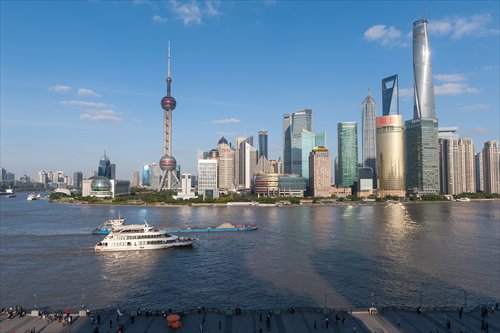ZTO Spurns Huge China Valuations For Benefits of U.S. Listing — Reuters
–
–
–
–
—
By Elzio Barreto and Julie Zhu | HONG KONG
Chinese logistics company ZTO Express is turning up the chance of a much more lucrative share listing at home in favor of an overseas IPO that lets its founder retain control and its investors cash out more easily.
To steal a march on its rivals in the world’s largest express delivery market, it is taking the quicker U.S. route to raise $1.3 billion for new warehouses and long-haul trucks to ride breakneck growth fueled by China’s e-commerce boom.
Its competitors SF Express, YTO Express, STO Express and Yunda Express all unveiled plans several months ago for backdoor listings in Shenzhen and Shanghai, but ZTO’s head start could prove crucial, analysts and investors said.
“ZTO will have a clear, certain route to raise additional capital via U.S. markets, which their competitors, assuming they all end up quoted in China, will not,” said Peter Fuhrman, CEO of China-focused investment bank China First Capital.
With a backlog of about 800 companies waiting for approval to go public in China and frequent changes to the listing rules by regulators, a New York listing is generally a quicker and more predictable way of raising funds and taps a broader mix of investors, bankers and investors said.
“ZTO will have a built-in long-term competitive advantage – more reliable access to equity capital,” Fuhrman added.
U.S. rules that allow founder Meisong Lai to retain control over the company and make it easier for ZTO’s private equity investors to sell their shares were some of the main reasons to go for an overseas listing, according to four people close to the company. U.S. markets allow a dual-class share structure that will give Lai 80 percent voting power in the company, even though he will only hold 28 percent of the stock after the IPO.
Most of Lai’s shares are Class B ordinary shares carrying 10 votes, while Class A shares, including the new U.S. shares, have one vote. China’s markets do not allow shares with different voting power.
ZTO’s existing shareholders, including private equity firms Warburg Pincus, Hillhouse Capital and venture capital firm Sequoia Capital will also get much more leeway and flexibility to exit their investment under U.S. market rules. In China, they would be locked in for one to three years after the IPO.
As concerns grow about a weakening Chinese currency, the New York IPO also gives it more stable dollar-denominated shares it can use for international acquisitions, the people close to the company said.
IN DEMAND
Demand for the IPO, the biggest by a Chinese company in the United States since e-commerce giant Alibaba Group’s $25 billion record in 2014, already exceeds the shares on offer multiple times, two of the people said.
That underscores the appeal of the fast-growing company to global investors, despite a valuation that places it above household names United Parcel Service Inc and FedEx Corp.
The shares will be priced on Oct. 26 and start trading the following day.
ZTO is selling 72.1 million new American Depositary Shares (ADS), equivalent to about 10 percent of its outstanding stock, in the range $16.50 to $18.50 each. The range is equal to 23.4-26.3 times its expected 2017 earnings per share, according to people familiar with the matter.
By comparison, Chinese rivals SF Express, YTO Express, STO Express and Yunda shares trade between 43 and 106 times earnings, according to Haitong Securities estimates.
UPS and FedEx, which are growing at a much slower pace, trade at multiples of 17.8 and 13.4 times.
“The A-share market (in China) does give you a higher valuation, but the U.S. market can help improve your transparency and corporate governance,” said one of the people close to ZTO. “Becoming a New York-listed company will also benefit the company in the long-term if it plans to conduct M&A overseas and seek more capital from the international market.”
China’s express delivery firms handled 20.7 billion parcels in 2015, shifting 1.5 times the volume in the United States, according to consulting firm iResearch data cited in the ZTO prospectus.
The market will grow an average 23.7 percent a year through 2020 and reach 60 billion parcels, iResearch forecasts.
Domestic rivals STO Express and YTO Express have unveiled plans to go public with reverse takeovers worth $2.5 billion and $2.6 billion, while the country’s biggest player, SF Express, is working on a $6.4 billion deal and Yunda Express on a $2.7 billion listing.
ZTO plans to use $720 million of the IPO proceeds to purchase land and invest in new facilities to expand its packaged sorting capacity, according to the listing prospectus.
The rest will be used to expand its truck fleet, invest in new technology and for potential acquisitions.
“It’s a competitive industry and you do need fresh capital for your expansion, in particular when all your rivals are doing so or plan to do so,” said one of the people close to the company.
http://www.reuters.com/article/us-zto-express-ipo-idUSKCN12L0QH
–



















